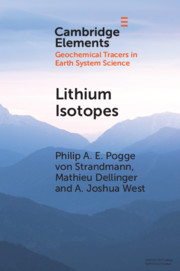Element contents
Lithium Isotopes
Published online by Cambridge University Press: 17 August 2021
Summary
Keywords
- Type
- Element
- Information
- Online ISBN: 9781108990752Publisher: Cambridge University PressPrint publication: 26 August 2021
References
Primary Sources
Secondary Sources
- 5
- Cited by



